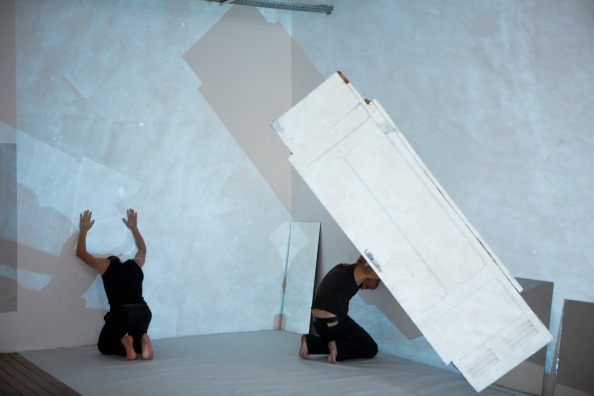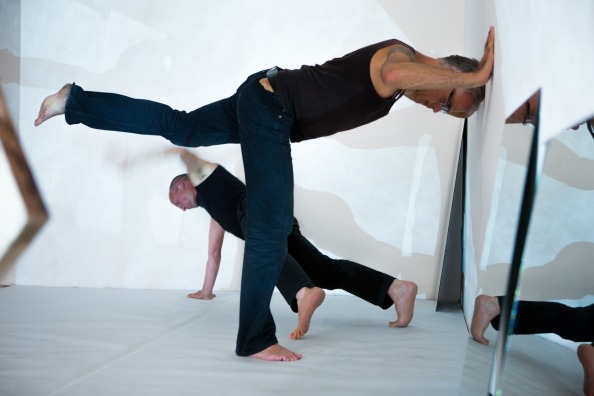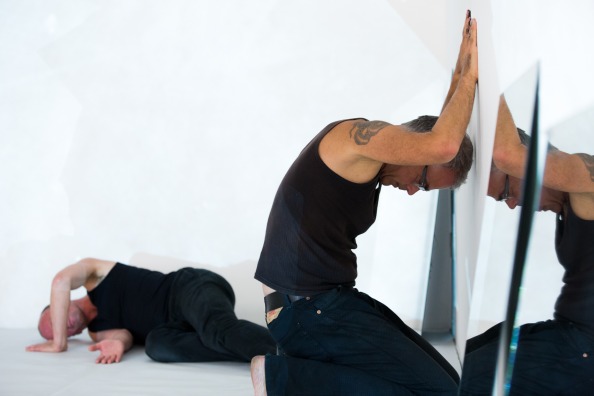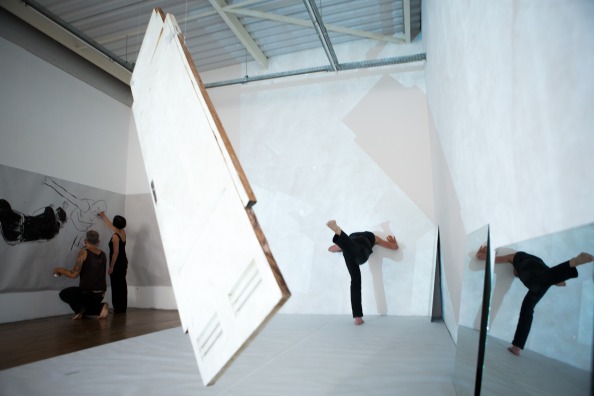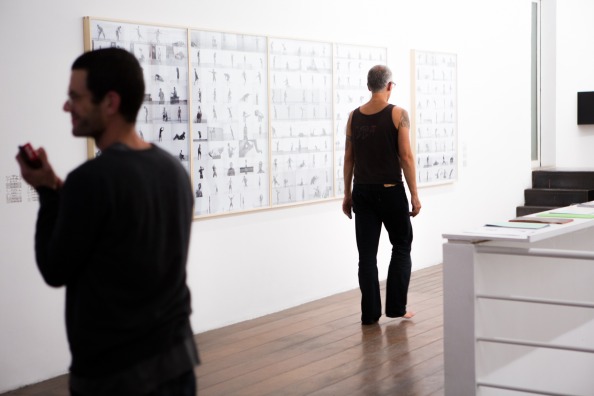
Temporal Affairs - Rose Akras, Dirk Jan Jager and Rob Visser
Photography: Rafael Cañas
August 8, 2014
Galeria Vermelho
São Paulo, Brazil
From July 15 through August 9, 2014, Galeria Vermelho is presenting the 10th edition of the performance art show VERBO.
To discuss questions related to the documentation and recording of actions and performances by way of photos, videos, musical scores and propositions, their autonomy in time and their status and relevance in the current art system, the program of the 10th edition of VERBO also includes an exhibition of photos and videos, as well as the 3rd edition of the seminar “VERBO Conjugado.” Mediated by the show’s artistic director, Marcos Gallon, the four tables that compose the seminar have been elaborated based on themes related to the recording and documentation of performances and actions. To discuss questions related with “The Body and Its Image,” the organizers invited choreographer and university professor Juliana Moraes (Brazil), and photographer and performer Manuel Vason (Italy-England). Curator and director of Videobrasil Solange Farkas, together with Agnès Violeau, who curated the exhibition Des Choses em Moins, des Choses en Plus – Les Collections Imaterielles du CNAP, presented recently at the Palais de Tokyo (Paris), and the artist Maurício Ianês will discuss “Curatorship and Performance”. The theme of the third table is “Where is the art object? Where is the artist?” presented by gallerist Jaqueline Martins along with artist and university professor Mario Ramiro. The Brazilian curator residing in Copenhagen, Julia Rodrigues, and the artist Ana Montenegro will present “Propositions and Scores.”
The Performances
The performances featured at the 10th edition of VERBO were selected with the aim of presenting the public with a panorama concerning the questions and procedures that make up the lexicon of the artists dedicated to performance today.
Questions associated to the construction of identity arise in The dog needs to eat, by Olivia Reschofsky, and in Temporal Affairs #2, by Rose Akras in partnership with Dutch artists Dirk Jan Jager and Rob Visser.
The institutional criticism installed at the core of the performance appears in Projeto para Inhotim (2014), by Dora Longo Bahia, in Las Posiciones by the artist duo Los Torreznos, in Círculos Concêntricos (2013) by Enrique Ježik, and in I can’t hear you (2014), by Lot Meijers.
The ways in which performance artists have resorted to the use of technological tools like computer programs and devices that enlarge the limits of the body appear in the performance/installation Voice Over (2014), by the artist duo Detanico Lain, in A representação pornográfica do artista em seu atelier (2014), by Guilherme Peters, and in Metáfora (2014), by Manuel Vason.
The research into the possibilities and limits of language arise in The Writer (2014), by Maurício Ianês, and in Modelo Vivo (2014), by Fabio Morais. Collaborative processes based on musical scores and sonic elements appear in Antifonia para Lira e Serrote (2014), by Ana Montenegro and Wilson Sukorsky, in the concert proposed by the Cão artist collective, composed of Dora Longo Bahia, Ricardo Carioba, Maurício Ianês and Bruno Palazzo, in “I Might As Well Leave” (2014), by Nina Glockner, and in There Is No Place Like Home (2014), by Nina Wijnmaalen. The body of the artist as a catalyzer of energies, expectations and ambitions arises in AL13FB<3 by Fernando Belfiore.

